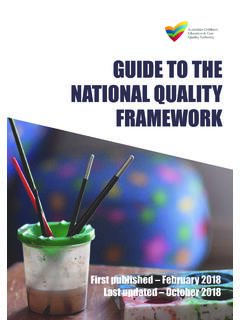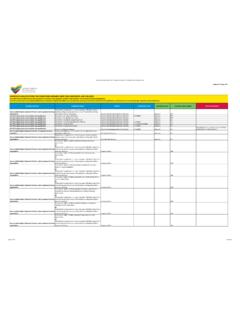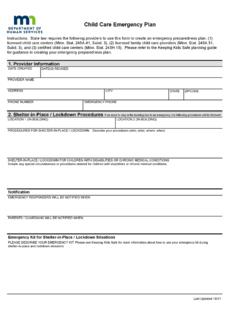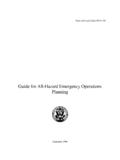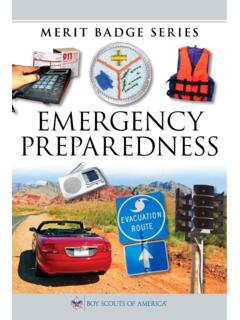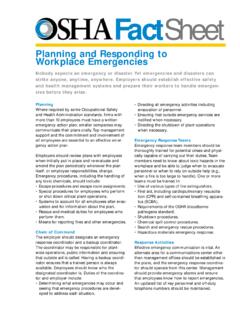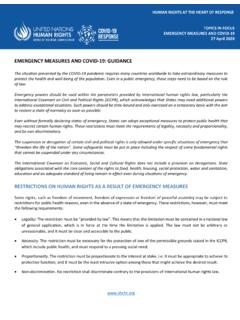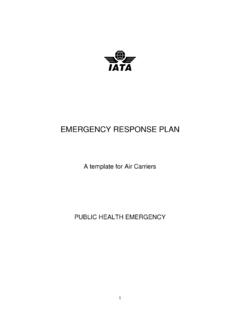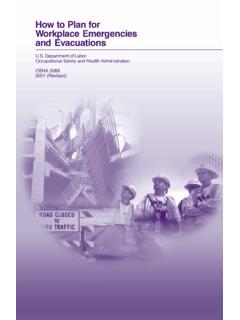Transcription of MANAGING Emergency Situations
1 MANAGING Situations in Education and Care Services Emergency CONTENTSI ntroduction 4 What is an Emergency situation ? 5 What to include in policies and procedures? 7 Planning for Emergency Situations 9 Strategies for recovery 19 Appendices 21 Useful resources 28 Bibliography 30 Children s Services Central is the Professional Support Coordinator in New South Wales and is an initiative funded by the Australian Government under the Inclusion and Professional Support Program. Children s Services Central is managed by a consortium of key organisations that resource and support the sectors of children s services in New South Wales. Feedback and enquiries should initially be directed to the Professional Support Coordinator in your region. Further information can be sought by contacting the Department of Education, Employment and Workplace information in this document draws on information, opinions and advice provided by a variety of individuals and organisations, including the Commonwealth and Children s Services Central.
2 The Australian Government and Children s Services Central accept no responsibility for the accuracy or completeness of any material contained in this document. Additionally, the Commonwealth and Children s Services Central disclaim all liability to any person in respect of anything, and of the consequences of anything, done or omitted to be done by any such person in reliance, whether wholly or partially, upon any information presented in this in this document is made available on the understanding that the Commonwealth and Children s Services Central are not providing professional advice. Before relying on any of the material in this document, users should obtain appropriate professional advice. Views and recommendations which may also be included in this document are those of the authors, only, and do not necessarily reflect the views of Children s Services Central, the Commonwealth, the Minister for Department of Education, Employment and Workplace Relations (DEEWR) or indicate a commitment to a particular course of is granted for material from this publication to be photocopied for use within Children s Services Central only.
3 Permission must be sought from Children s Services Central for any other reproduction of the material. Copyright 2012 Children's Services CentralNSW Professional Support Co-ordinatorPSC Alliance :: 3 MANAGING Emergency Situations in Education and Care Services ACKNOWLEDGEMENTThe National Quality Standard asks us - How do we identify which Emergency procedures and specific action plans are required for our service and how often do we practise these?This publication seeks to offer services some guidance around preparing and planning for Emergency Situations . MANAGING Emergency Situations in Education and Care Services provides valuable information which contributes to ongoing professional conversations and discussions for whole staff teams. The publication encourages education and care services to consider Emergency Situations within their local contexts and develop action plans using local and state-based resource agencies.
4 This national resource; developed on behalf of the Professional Support Coordinators Alliance (PSCA); supports educators and their teams with policy planning, development and you to everyone who collaborated in the development of this s Services Central4 :: PSC AllianceManaging Emergency Situations in Education and Care Services INTRODUCTIONWhen an Emergency situation occurs it is important that the situation be handled carefully and with consideration for all involved. The Emergency , no matter what the circumstances, has the potential to cause a ripple effect within the education and care service environment and therefore the manner in which the situation is handled is vital. Supporting children to cope with an Emergency situation requires careful planning and cohesive Situations , if managed successfully, are an opportunity to help support and build on children s coping mechanisms and resilience.
5 They can also be an opportunity for communities to bond and for children to experience the strength and compassion within their resource has been developed as a guide for education and care services with the intention to assist educators and families to prepare and plan should an Emergency situation occur. However, the resource can be adapted to use by any education and care service. The resource directly links to the National Quality Standard; in particular Quality Areas 1, 6 and 7 and Part , Division 2 of the Education and Care Services National Situations involving medical emergencies such as allergic reactions are not covered in this guide. When dealing with medical emergencies, it is very important to follow advice provided during first aid hope you find this publication a useful tool for planning for potential Emergency Alliance :: 5 MANAGING Emergency Situations in Education and Care Services WHAT IS AN Emergency situation ?
6 Examples of Emergency Situations which may affect an education and care service: fAccident or serious injury to child or staff member where medical attention or hospitalisation is required; fBurst water main or pipe; fFire; fFlood; fCyclone, severe storm or dust storm; fBlizzard or ice; fAtmospheric contaminant; fDangerous animal, insect or reptile; fViolent or potentially violent individual; fBomb threat; fSiege or hostage situation ; fGas leak; fLost, missing, unaccounted for or abandoned child; or fFatal incident involving a child, family member or staff member at the education and care who may be involved: fChildren; fEducators and staff; fFamilies; fVisitors or contractors; fEmergency contacts; fRelevant agencies; fPolice and Emergency services; fTelecommunication services; fTransport services; and of an Emergency situation may be that they are sudden, unexpected, dangerous or distressing.
7 Emergency Situations may challenge educator s beliefs, and the policies and procedures of the education and care service. Normality is threatened. The situation may induce a strong emotional reaction that could have the ability to hamper clear to manage incidents and emergencies assists services to protect adults and children, to maintain children s wellbeing and a safe environment and to meet requirements of relevant occupational health and safety legislation. (Guide to the National Quality Standard, ).6 :: PSC AllianceManaging Emergency Situations in Education and Care Services Potential reactionsWhen presented with a crisis our mind and bodies respond quickly. This is reflected in a change in our mental state; how we think and how we act. This reaction may be varied in different people, and until experienced, is often an unknown reaction.
8 For this reason it is important that policies and procedures are in place and are well practiced by educators and children. Signs of panic that may be exhibited: fShallow breathing: your breath becomes shallow and the person can feel like there is not enough air to fill their lungs; fIncreased heart rate: person may feel their heart beating faster than normal, may report pounding heartbeat or palpitations; fSweating: hot or cold sweats are common; fDiscomfort in the chest area: including chest pain or tight feeling in the chest; fNausea: a bloated feeling or abdominal discomfort; fBehavioural changes; fConfusion or speech difficulties; fTrembling muscles or uncontrollable shaking: both visible or just a feeling of shaking all over; fAn urgent need to go to the toilet.
9 And/or fChildren may become clingy or a clear plan for the management of Emergency Situations assists educators to handle these calmly and effectively, reducing the risk of further harm or damage (Guide to the National Quality Standard, ). Educators need to be aware that when confronted with a crisis, children will be less capable of concentrating. They may be anxious and more attuned to non-verbal cues such as tone of voice, body posture and facial expressions. Educators need to monitor children closely. If adults are unable to remain calm, they should be removed from the direct care of Alliance :: 7 MANAGING Emergency Situations in Education and Care Services For each education and care service, the potential for Emergency Situations are varied.
10 An Emergency in relation to an education and care service, includes any situation or event that poses an imminent or severe risk to the persons at the education and care service premises (Education and Care Services National Regulations, p 5). To determine what policies and procedures your education and care service requires, undertake a risk assessment. Risk assessments assist with identifying potential hazards and define or determine the level of risk or danger. The risk assessment process will help to identify the current control measures that are in place and determine if further control measures may be required. For a sample risk assessment template, refer to Appendix complianceThe National Quality Standard, Element (Guide to the National Quality Standard, p.)




